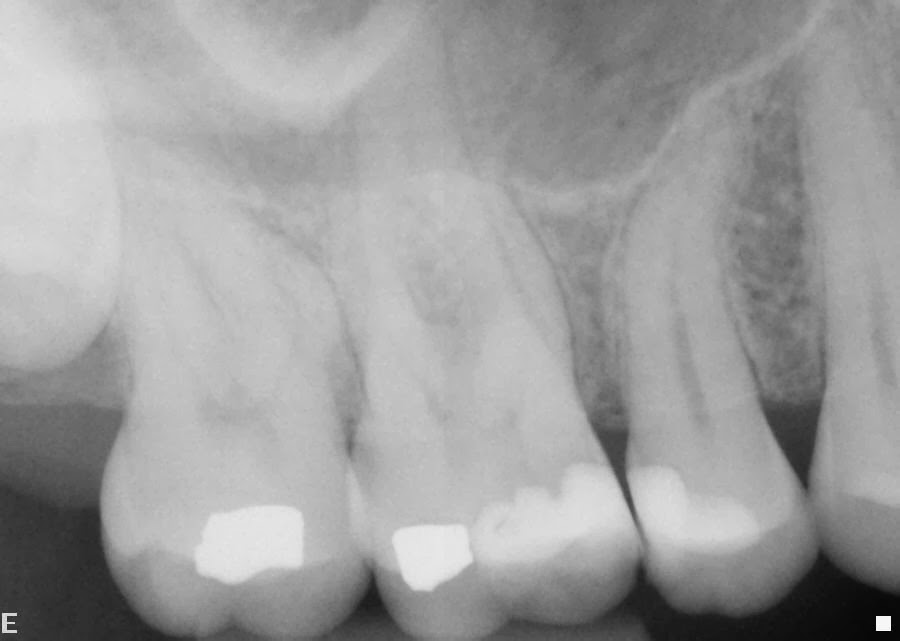 | ||
Post operative x-ray 9 months after root canals on #27,28 |
Original root canal was completed in my office. Patient was asymptomatic but radiolucent areas were still present. Patient desired no additional treatment.
 |
| 1 year post operative x-ray |
Same as 9 months
 |
Pre-operative x-ray / 6 year check up |
There was a significant change in radial lucency and the tooth was becoming symptomatic.
 |
Immediate post-operative x-ray |
Surgical approach was decided for both #27 and #28 as being the most predictable as the original root canal therapy seemed to be adequate. During the surgery no fractures were found nor any unusual periodontal problems.
 |
| 15 month check up |
Patient is asymptomatic and apical healing is observed around both roots.
Comments:
It is always difficult to decide whether to retreat a root canal or to approach it surgically. If all canals have been found and the obturation seems to be adequate, probably a surgical approach would be more appropriate and more predictable.
It is always difficult to decide whether to retreat a root canal or to approach it surgically. If all canals have been found and the obturation seems to be adequate, probably a surgical approach would be more appropriate and more predictable.








